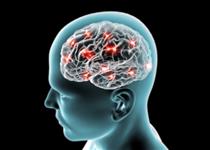Abstract
Mutations in the putative glutamatergic synapse scaffolding protein SAP97 are associated with the development of schizophrenia in humans. However, the role of SAP97 in synaptic regulation is unclear. Here we show that SAP97 is expressed in the dendrites of granule neurons in the dentate gyrus but not in the dendrites of other hippocampal neurons. Schizophrenia-related perturbations of SAP97 did not affect CA1 pyramidal neuron synapse function. Conversely, these perturbations produce dramatic augmentation of glutamatergic neurotransmission in granule neurons that can be attributed to a release of perisynaptic GluA1-containing AMPA receptors into the postsynaptic densities of perforant pathway synapses. Furthermore, inhibiting SAP97 function in the dentate gyrus was sufficient to impair contextual episodic memory. Together, our results identify a cell-type-specific synaptic regulatory mechanism in the dentate gyrus that, when disrupted, impairs contextual information processing in rats.
Introduction
Schizophrenia is a debilitating psychiatric disorder that affects around 20 million people worldwide. Symptoms of this disorder include hallucinations, delusions, flat affect, the loss of a sense of personal identity, poor executive function, and deficits in memory1,2. Despite many years of research, it remains unclear which cellular and molecular mechanisms in the brain are disrupted in individuals with schizophrenia. It is also unclear which specific regions in the brain are strongly affected by the disruption of these mechanisms. Accumulating evidence supports a connection between SAP97 loss of function and schizophrenia3,4,5,6,7,8,9,10,11,12,13,14. For example: the gene encoding SAP97, DLG1, was recently identified as a potential hub of schizophrenia-related synaptic dysfunction13; missense mutations in SAP97 have been identified in individuals with schizophrenia12,14; and microdeletion mutations in humans resulting in the loss of a DLG1 allele give rise to a 40-fold increase in the risk of developing schizophrenia8,9. SAP97 is a Membrane-Associated Guanylate Kinase (MAGUK) protein. MAGUK protein family members include PSD-95, PSD-93, SAP102, and SAP97. PSD-95, PSD-93, and SAP102 are major constituents of the glutamatergic synapse postsynaptic density (PSD). At the postsynaptic side of glutamatergic synapses, PSD-95, PSD-93, and SAP102 provide scaffolds for synaptic protein complexes via their three PSD-95/Dlg/ZO1 (PDZ) domains15. It is well established that PSD-95, PSD-93, and SAP102 use their PDZ domains to anchor AMPA and NMDA receptors (AMPARs and NMDARs) in the PSD in direct opposition to regions of presynaptic glutamate release. This MAGUK protein-mediated glutamate receptor positioning is critical for efficient activation of these receptors by presynaptically-released glutamate.
In contrast to other MAGUK proteins, the role of SAP97 in synaptic regulation is uncertain, despite the fact that SAP97 is the only MAGUK that can interact directly with AMPARs. This interaction occurs through SAP97’s PDZ2 domain binding to the C-terminal PDZ-binding domain of the AMPAR subunit GluA116,17,18,19,20. It is also unclear whether the C-tail of GluA1 plays any role in synaptic regulation18,21. Previous studies have provided conflicting data regarding SAP97’s influence on synaptic function22,23,24,25,26,27. Most of these studies have relied on recombinant expression of SAP97 and/or dissociated neuron cultures where synapses form between unknown neuron subtypes. However, one particularly notable study has shown that knocking out SAP97 led to no alteration in glutamatergic neurotransmission in hippocampal CA1 pyramidal neurons28. Additionally, mutant mice expressing a PDZ-binding domain lacking the form of the GluA1 subunit which prevents AMPARs from binding to SAP97 (GluA1-Δ7 mice) were found to have normal glutamatergic neurotransmission in hippocampal CA1 pyramidal neurons18. Together, these studies have been used to support a compelling argument against a role for SAP97 in the regulation of glutamatergic synaptic transmission15. This lack of understanding regarding SAP97’s role in the brain has been particularly frustrating given SAP97’s growing implication in schizophrenia, SAP97’s similarity to other essential synaptic proteins, and the fact that schizophrenia is largely considered to be a synaptic disease13,14,29.
Increasing evidence points to dysfunction of the dentate gyrus as a contributing factor in the development of schizophrenia1,30,31,32,33,34,35,36,37,38. The dentate gyrus serves as the gateway for information coming into the hippocampus via the perforant pathway, and symptoms associated with schizophrenia exhibit a high degree of correlation with symptoms stemming from dentate gyral dysfunction1,30,39. In the present study, we find that the expression of βSAP97, the major isoform of SAP9724, is absent in the apical and basal dendrites of CA3 and CA1 pyramidal neurons of the hippocampus. In contrast, robust βSAP97 expression is observed in the dendrites of granule neurons in the dentate gyrus (DG granule neurons). Given that reduced SAP97 expression in the brain is associated with a substantially increased risk of developing schizophrenia3,8,9, we were interested in whether βSAP97 regulates glutamatergic synapse function in DG granule neurons and whether reduced βSAP97 expression in the dentate gyrus is sufficient to produce schizophrenia-related behavioral phenotypes in rodents.
Here we find that reducing βSAP97 expression in DG granule neurons results in a dramatic increase in AMPAR-mediated synaptic transmission following perforant path stimulation. Conversely, inhibition of βSAP97 expression in CA1 pyramidal neurons had no effect on glutamatergic synaptic transmission. Furthermore, we find that reducing βSAP97 expression specifically within the dentate gyrus is sufficient to disrupt contextual episodic memory processing in rats. Similar memory deficits are present in individuals with schizophrenia and have been proposed to contribute to the development of delusions, disorganization, hallucinations, and the loss of a sense of personal identity observed with this disorder40,41,42,43,44,45,46,47,48,49,50,51,52. Finally, we show that schizophrenia-related missense mutations clustered in SAP97’s PDZ2 domain also produce large increases in synaptic AMPAR function in DG granule neurons that can be attributed to the release of perisynaptic GluA1-containing AMPARs into the PSDs of perforant pathway synapses. Altogether, our study identifies a cell-type-specific synaptic regulatory mechanism in the dentate gyrus that, when disrupted, impairs contextual episodic memory in rats.







